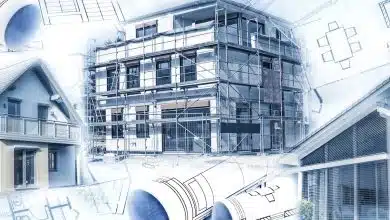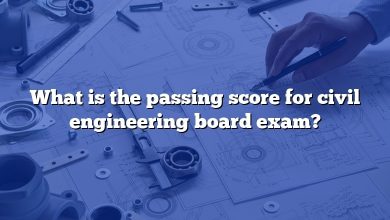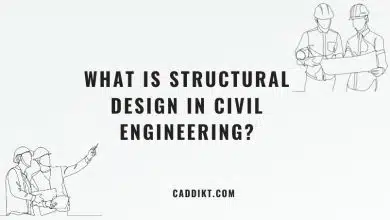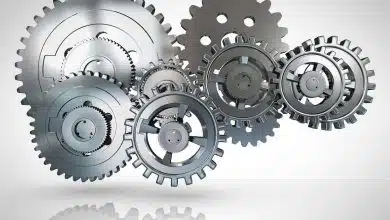Aerospace engineering is a multifaceted discipline, rich in complexity and breathtaking in its scope. It’s a field that challenges us to grapple with concepts that range from the intimately familiar to the inconceivably vast, from the dynamics of flight right here on Earth to the mind-bending realities of space exploration. This intricate nexus of science, technology, and imagination has its own unique language, a lexicon of terms and phrases that encapsulate its numerous concepts, processes, and principles.
This glossary serves as a comprehensive guide to the vernacular of aerospace engineering, aiming to demystify the language of this exciting field. Whether you’re a seasoned professional seeking a quick refresher, a student embarking on your educational journey, or an enthusiast eager to broaden your understanding, this glossary provides over 100 essential terms, definitions, and descriptions. With each term, we’re not only illuminating a word or phrase but also shedding light on the underlying principles that shape the world of aerospace engineering.
Explore the Lexicon of Aerospace Engineering: +100 Key Terms Defined
1. Aileron
An aileron is a hinged flight control surface usually mounted on the trailing edge of the wing of a fixed-wing aircraft. Ailerons are used to control the roll of an aircraft by changing the wing’s lift distribution. When one aileron goes up, it decreases the lift on that side, causing the aircraft to roll in the opposite direction.
2. Airfoil
An airfoil is a shape that is designed to produce lift when air flows over it. It is typically used in the wings and tail of aircraft. The shape of the airfoil is designed to create a pressure difference between the top and bottom surfaces, resulting in a net upward force known as lift.
3. Aircraft
An aircraft is a machine that is designed to fly through the air. It includes all types of flying vehicles, such as airplanes, helicopters, and gliders.
4. Airframe
The airframe of an aircraft is the structure that supports the weight of the aircraft and the aerodynamic loads during flight. It includes the wings, fuselage, and empennage. The airframe is designed to be strong, yet lightweight, in order to maximize the aircraft’s performance.
5. Airspeed
Airspeed is the speed of an aircraft relative to the air around it. It is usually measured in knots (nautical miles per hour) or miles per hour (mph).
6. Angle of Attack
The angle of attack is the angle between the chord line of an airfoil and the direction of the relative wind. It is a key factor in determining the lift and drag of an airfoil. When the angle of attack is too high, the air can no longer flow smoothly over the airfoil, resulting in a stall.
7. Angle of Incidence
The angle of incidence is the angle between the chord line of an airfoil and the longitudinal axis of the aircraft. It is fixed by the design of the aircraft and affects the aircraft’s stability and handling characteristics.
8. Apogee
Apogee is the highest point in an aircraft or spacecraft’s trajectory. It is the point at which the vehicle is farthest from the center of the Earth. For spacecraft, the apogee is often used to refer to the highest point in its orbit around a celestial body.
9. Aspect Ratio
The aspect ratio of a wing is the ratio of its span to its chord. It is an important parameter in determining the aerodynamic performance of the wing. Wings with a high aspect ratio are more efficient at producing lift, while wings with a low aspect ratio are more maneuverable.
10. Astrodynamics
Astrodynamics is the study of the motion of spacecraft and other objects in space. It involves the application of principles from physics and mathematics to understand and predict the behavior of objects in space.
11. Attitude
The attitude of an aircraft refers to its orientation in space. It is usually described in terms of pitch, roll, and yaw angles.
12. Avionics
Avionics refers to the electronic systems used in aircraft. This includes communication, navigation, and monitoring systems, as well as the control systems that enable pilots to operate the aircraft.
13. Balloon
A balloon is a lighter-than-air aircraft that is lifted by hot air or gas. It is typically made of nylon or other lightweight materials and is used for recreational or scientific purposes.
14. Boundary Layer
The boundary layer is the layer of air that is closest to the surface of an aircraft. It is characterized by a slower velocity and higher pressure than the air above it. The behavior of the boundary layer is important in determining the aerodynamic performance of the aircraft.
15. Canard
A canard is a type of aircraft configuration in which the horizontal stabilizer is located at the front of the aircraft, ahead of the main wing. The canard provides lift as well as pitch control, and is often used in supersonic aircraft.
16. Center of Gravity
The center of gravity is the point on an aircraft where the weight is evenly balanced in all directions. It is an important parameter in determining the stability and handling characteristics of the aircraft.
17. Center of Lift
The center of lift is the point on an airfoil where the lift can be considered to act. It is an important parameter in determining the aerodynamic performance of the wing, and affects the aircraft’s stability and control.
18. Center of Pressure
The center of pressure is the point on an airfoil where the aerodynamic forces can be considered to act. It is an important parameter in determining the aerodynamic performance of the wing, and affects the aircraft’s stability and control.
19. Chord
The chord is the straight line that connects the leading and trailing edges of an airfoil. It is an important parameter in determining the aerodynamic performance of the wing.
20. Coefficient of Drag
The coefficient of drag is a dimensionless quantity that represents the drag of an object in a fluid flow. It is an important parameter in determining the aerodynamic performance of the aircraft.
21. Coefficient of Lift
The coefficient of lift is a dimensionless quantity that represents the lift of an airfoil in a fluid flow. It is an important parameter in determining the aerodynamic performance of the wing, and affects the aircraft’s lift and stability.
22. Combustion Chamber
The combustion chamber is the part of a jet engine where fuel is burned to produce hot gases. The hot gases are then accelerated through a nozzle to produce thrust.
23. Compressibility
Compressibility is the tendency of a fluid to decrease in volume as the pressure on it increases. It is an important factor in determining the aerodynamic performance of an aircraft at high speeds.
24. Control Surface
A control surface is a moveable surface on an aircraft that is used to control its attitude and direction of flight. Examples include ailerons, elevators, and rudder.
25. Delta-V
Delta-V is a measure of the change in velocity that is required to perform a maneuver in space. It is a critical parameter in spaceflight, as it determines the amount of fuel and energy required to reach a desired orbit or trajectory.
26. Dihedral
Dihedral is the upward angle of the wings of an aircraft when viewed from the front. It is designed to provide stability and improve the aircraft’s roll control.
27. Drag
Drag is the force that opposes motion through a fluid. It is an important factor in determining the aerodynamic performance of an aircraft, as it affects its speed and fuel efficiency.
28. Drag Coefficient
The drag coefficient is a dimensionless quantity that represents the drag of an object in a fluid flow. It is an important parameter in determining the aerodynamic performance of the aircraft.
29. Elevator
The elevator is a control surface on an aircraft that is used to control its pitch. When the elevator is deflected upward, it causes the aircraft to pitch up, and vice versa.
30. Empennage
The empennage is the tail section of an aircraft. It includes the horizontal and vertical stabilizers, as well as the rudder.
31. Engine Thrust
Engine thrust is the force produced by a jet engine that propels an aircraft forward. It is an important factor in determining the aircraft’s speed and performance.
32. Fixed-Wing Aircraft
A fixed-wing aircraft is an aircraft that uses wings to generate lift. It includes all types of aircraft that do not use rotor blades to lift off the ground, such as airplanes and gliders.
33. Flap
A flap is a moveable control surface on the trailing edge of an aircraft wing. It is used to increase the lift and drag of the wing during takeoff and landing.
34. Flight Control System
The flight control system is the set of devices and software that allow pilots to control an aircraft. It includes the control surfaces, as well as the avionics and other electronic systems that enable the aircraft to be flown.
35. Flight Envelope
The flight envelope is the range of speed, altitude, and other parameters within which an aircraft can be safely flown. It is an important consideration in aircraft design and certification.
36. Flight Path
The flight path is the trajectory that an aircraft follows through the air. It is affected by a variety of factors, including the aircraft’s speed, altitude, and attitude.
37. Fuselage
The fuselage is the main body of an aircraft. It contains the cockpit, passenger compartment, and cargo area, as well as the engines and fuel tanks.
38. G-Force
G-Force is the force that is experienced by an object as a result of acceleration. It is often used to describe the forces that are experienced by pilots and passengers during flight maneuvers.
39. Glide Ratio
The glide ratio is the ratio of the distance traveled horizontally to the altitude lost during a glide. It is an important parameter in determining the range and efficiency of gliders and other unpowered aircraft.
40. Glider
A glider is an aircraft that is designed to fly without an engine. It is typically launched from the ground or towed behind another aircraft, and then glides through the air using its wings to generate lift.
41. Gravity Turn
A gravity turn is a maneuver used during spaceflight to minimize the amount of fuel required to reach orbit. It involves gradually pitching the rocket over as it ascends, so that it follows a curved trajectory that takes advantage of the Earth’s gravitational pull.
42. Ground Effect
Ground effect is the phenomenon where the presence of the ground affects the airflow around an aircraft. It can cause an increase in lift and decrease in drag, and is particularly pronounced in aircraft that fly close to the ground.
43. Gyroscope
A gyroscope is a device that is used to measure or maintain orientation and angular velocity. It is commonly used in aircraft and spacecraft to provide stability and navigation information.
44. Heliocentric Orbit
A heliocentric orbit is an orbit around the sun. It is used to describe the motion of planets, asteroids, and other celestial bodies in our solar system.
45. Horizontal Stabilizer
The horizontal stabilizer is the horizontal surface at the rear of an aircraft that provides stability in pitch. It typically includes the elevator, which is used to control the aircraft’s pitch.
46. Hover
To hover is to maintain a stationary position in the air. It is often used to describe the flight of helicopters, which are capable of hovering in place using their rotors to generate lift.
47. Hydrodynamics
Hydrodynamics is the study of the motion of fluids, including liquids and gases. It is an important field of study in aerospace engineering, as it is used to understand the behavior of fluids around aircraft and spacecraft.
48. Hypersonic
Hypersonic refers to speeds that are greater than five times the speed of sound. Hypersonic flight is an area of active research in aerospace engineering, as it could potentially enable faster and more efficient travel through the atmosphere and into space.
49. Inertial Navigation System
An inertial navigation system is a navigation system that uses accelerometers and gyroscopes to determine an aircraft’s position and velocity. It is commonly used in aircraft and spacecraft to provide accurate navigation information.
50. Jet Engine
A jet engine is an engine that produces thrust by accelerating a stream of hot gases. It is commonly used in aircraft and is more fuel-efficient than other types of engines.
51. Laminar Flow
Laminar flow is a type of fluid flow in which the fluid moves in smooth, parallel layers with no turbulence. It is desirable for aircraft because it reduces drag and improves fuel efficiency.
Laminar flow can be disrupted by any disturbance in the airflow, such as a rough surface or a sharp corner. Therefore, it is important for aircraft designers to minimize the number of protrusions and sharp edges on an aircraft’s surface to maintain laminar flow.
52. Launch Vehicle
A launch vehicle is a rocket or other spacecraft that is used to launch satellites, spacecraft, or other payloads into space. Launch vehicles can be either expendable or reusable, and come in a variety of sizes and configurations depending on the mission requirements.
Launch vehicles typically consist of several stages, each of which contains its own rocket engine and fuel supply. The first stage provides the initial thrust to lift the vehicle off the ground, while the subsequent stages provide additional velocity to reach the desired altitude and velocity.
53. Lift
Lift is the force that is generated by an airfoil, such as a wing, when it moves through a fluid. It is perpendicular to the direction of motion and is responsible for keeping an aircraft in the air.
Lift is generated by the difference in pressure between the upper and lower surfaces of an airfoil. The greater the difference in pressure, the greater the lift. The amount of lift that can be generated by an airfoil depends on its shape, size, and the speed and density of the fluid.
54. Lift Coefficient
The lift coefficient is a dimensionless quantity that represents the lift generated by an airfoil relative to its size and the speed of the fluid. It is an important parameter in determining the aerodynamic performance of an aircraft, as it affects its lift and stability.
The lift coefficient can be calculated using the following equation:
CL = L / (0.5 * ρ * V^2 * S)
where CL is the lift coefficient, L is the lift, ρ is the density of the fluid, V is the speed of the fluid, and S is the area of the airfoil.
55. Lift-to-Drag Ratio
The lift-to-drag ratio is a dimensionless quantity that represents the efficiency of an airfoil or aircraft. It is the ratio of the lift generated by the airfoil to the drag it produces.
A higher lift-to-drag ratio indicates a more efficient airfoil or aircraft, as it is able to generate more lift for a given amount of drag. It is an important parameter in determining the range and fuel efficiency of an aircraft.
56. Longitudinal Stability
Longitudinal stability is the stability of an aircraft in pitch. It is determined by the relationship between the center of gravity and the center of lift of the aircraft.
An aircraft is longitudinally stable if it tends to return to its original pitch angle after being disturbed. This is important for safe and stable flight, as it allows the pilot to make small adjustments to the aircraft’s pitch without losing control.
Longitudinal stability can be affected by a variety of factors, including the position of the wings and tail, the shape of the airfoil, and the aircraft’s weight and balance.
57. Mach Number
The Mach number is a dimensionless quantity that represents the speed of an object relative to the speed of sound in the surrounding medium. It is an important parameter in aerodynamics, as it determines whether an aircraft is operating in subsonic, transonic, or supersonic flight.
The Mach number is defined as the ratio of the object’s speed to the speed of sound:
M = V / a
where M is the Mach number, V is the object’s speed, and a is the speed of sound in the surrounding medium.
58. Maximum Takeoff Weight
The maximum takeoff weight is the maximum weight at which an aircraft is certified to take off. It includes the weight of the aircraft, fuel, passengers, cargo, and any other equipment on board.
The maximum takeoff weight is an important parameter in aircraft design and certification, as it determines the aircraft’s performance and capabilities.
59. Nacelle
A nacelle is a streamlined enclosure that houses an aircraft’s engine. It is designed to reduce drag and improve the aerodynamic performance of the aircraft.
The nacelle typically includes the engine, as well as other components such as the fuel system, oil system, and air intake. It may also include soundproofing and heat insulation to reduce noise and heat generated by the engine.
60. Navigation
Navigation is the process of determining the position and course of an aircraft or spacecraft. It is essential for safe and efficient flight, and relies on a variety of technologies and techniques.
Navigation techniques include dead reckoning, which involves using the aircraft’s speed and direction to estimate its position, and celestial navigation, which involves using the positions of stars and other celestial bodies to determine the aircraft’s position.
61. Nozzle
A nozzle is a device that is used to accelerate and direct the flow of a fluid, such as air or exhaust gases. It is commonly used in jet engines and rocket engines to generate thrust.
The shape and size of the nozzle are important factors in determining the performance of the engine, as they affect the velocity and direction of the fluid flow.
62. Orbital Mechanics
Orbital mechanics is the study of the motion of objects in orbit around other objects. It is an important field of study in aerospace engineering, as it is used to understand the motion of spacecraft and other objects in space.
Orbital mechanics is governed by the laws of gravitation and motion, and involves concepts such as orbital velocity, orbital inclination, and orbital period.
63. Parachute
A parachute is a device that is used to slow the descent of an object through the air. It works by increasing the air resistance on the object, which reduces its velocity and helps it land safely.
Parachutes are commonly used in aircraft and spacecraft for emergency landing or re-entry. They can be either round or rectangular in shape, and are typically made from a lightweight, strong fabric such as nylon or Kevlar.
64. Perigee
Perigee is the point in an object’s orbit around a celestial body that is closest to that body. For example, the perigee of the moon’s orbit around the Earth is the point at which it is closest to the Earth.
Perigee is an important parameter in spaceflight, as it affects the spacecraft’s velocity and trajectory. A spacecraft in a low perigee orbit is traveling faster than one in a high perigee orbit, which can affect its fuel consumption and the amount of time it spends in orbit.
65. Pitch
Pitch is the rotation of an aircraft around its lateral axis, which runs from wingtip to wingtip. It is controlled by the aircraft’s elevator, which is located on the horizontal stabilizer at the rear of the aircraft.
Pitch is an important parameter in aircraft control, as it affects the aircraft’s altitude and speed. A positive pitch angle will cause the aircraft to climb, while a negative pitch angle will cause it to descend.
66. Pitot Tube
A Pitot tube is a device that is used to measure the airspeed of an aircraft. It works by measuring the difference in pressure between the static pressure and the total pressure of the air flowing around the aircraft.
The Pitot tube is typically mounted on the aircraft’s nose or wing, and is connected to a pressure gauge in the cockpit. It is an important instrument in aircraft navigation and control.
67. Propeller
A propeller is a device that is used to generate thrust in aircraft and other vehicles. It works by accelerating a stream of air or other fluid in one direction, which generates an equal and opposite force in the opposite direction.
Propellers can be either fixed-pitch or variable-pitch, depending on their design. They are typically powered by a piston engine or a turboprop engine, and are an important component in aircraft propulsion.
68. Ramjet
A ramjet is a type of jet engine that is designed to operate at supersonic speeds. It works by compressing the air that enters the engine using the aircraft’s forward speed, rather than a compressor.
Ramjets are typically used in high-speed missiles and other specialized aircraft, as they are not efficient at low speeds.
69. Range
Range is the maximum distance that an aircraft or other vehicle can travel on a single tank of fuel or other power source. It is an important parameter in aircraft design and operation, as it affects the aircraft’s mission capabilities and efficiency.
The range of an aircraft depends on a variety of factors, including its fuel capacity, efficiency, and speed.
70. RCS (Reaction Control System)
A reaction control system is a system that is used to control the orientation and movement of spacecraft and other vehicles in space. It works by expelling small amounts of gas or other propellant in precise directions, which generates a force that can be used to control the vehicle’s movement.
RCS systems are an important component of spacecraft and other vehicles that operate in space, as they allow for precise control and maneuverability in the absence of gravity and air resistance.
71. Roll
Roll is the rotation of an aircraft around its longitudinal axis, which runs from nose to tail. It is controlled by the aircraft’s ailerons, which are located on the trailing edge of the wings.
Roll is an important parameter in aircraft control, as it affects the aircraft’s direction and bank angle. A positive roll angle will cause the aircraft to bank to the right, while a negative roll angle will cause it to bank to the left.
72. Rotorcraft
A rotorcraft is a type of aircraft that uses rotating blades or rotors to generate lift and propulsion. They include helicopters, autogyros, and tiltrotors.
Rotorcraft are able to take off and land vertically, and are able to hover in place. They are used in a variety of roles, including search and rescue, military operations, and transportation.
73. Rudder
A rudder is a control surface that is located on the vertical stabilizer of an aircraft. It is used to control the aircraft’s yaw, or rotation around its vertical axis.
Rudders work by deflecting the airflow over the vertical stabilizer, which generates a force that can be used to turn the aircraft left or right. They are an important component in aircraft control, especially during takeoff and landing.
74. Satellite
A satellite is an object that orbits around a celestial body, such as the Earth or another planet. Satellites are used for a variety of purposes, including communication, navigation, and scientific research.
Satellites can be either natural or artificial, and come in a variety of sizes and configurations. They are an important component of modern society, and are used in everything from weather forecasting to global positioning.
75. Scramjet
A scramjet is a type of jet engine that is designed to operate at hypersonic speeds. It works by compressing the air that enters the engine using the aircraft’s forward speed, rather than a compressor.
Scramjets are still in the experimental stage, but have the potential to revolutionize air travel and spaceflight by allowing for faster and more efficient propulsion.
76. Shock Wave
A shock wave is a high-pressure wave that is generated by an object traveling through a fluid, such as air or water, at a speed faster than the speed of sound.
Shock waves can have a variety of effects on aircraft and other vehicles, including increased drag and reduced lift. They can also cause sonic booms, which are loud noises that are generated when a shock wave reaches the ground.
77. Sonic Boom
A sonic boom is a loud noise that is generated when an object travels through the air at a speed faster than the speed of sound. It is caused by the shock wave that is generated by the object’s passage through the air.
Sonic booms are a significant nuisance to people on the ground, and can cause damage to buildings and other structures. They are also a major factor in the design of supersonic aircraft, as they limit the areas where these aircraft can be flown.
78. Spacecraft
A spacecraft is a vehicle designed for travel in space. They include manned spacecraft, such as the Space Shuttle and the International Space Station, as well as unmanned spacecraft, such as probes and rovers.
Spacecraft are designed to withstand the harsh conditions of space, including vacuum, extreme temperatures, and radiation. They are used for a variety of purposes, including scientific research, exploration, and telecommunications.
79. Spaceplane
A spaceplane is a type of spacecraft that is designed to take off and land like an aircraft. They are typically designed to carry people and cargo into space, and are capable of traveling to and from low Earth orbit.
Spaceplanes are still in the experimental stage, but have the potential to revolutionize spaceflight by making it more affordable and accessible.
80. Span
Span is the distance between the tips of an aircraft’s wings. It is an important parameter in aircraft design and performance, as it affects the aircraft’s lift and drag characteristics.
Aircraft with longer spans generally have better lift-to-drag ratios, which means they are more efficient at producing lift and require less power to maintain level flight.
81. Stability
Stability is the ability of an aircraft to maintain a steady flight path without excessive input from the pilot or control system. It is an important parameter in aircraft design and safety, as it affects the aircraft’s ability to handle turbulence and other disturbances.
Stability can be either static or dynamic. Static stability refers to the aircraft’s tendency to return to its original position after it has been disturbed, while dynamic stability refers to its ability to remain stable in response to ongoing disturbances.
82. Stall
A stall is a loss of lift that occurs when an aircraft’s wing exceeds its critical angle of attack. It can occur at any speed and altitude, and is a major factor in aircraft accidents.
Stalls are caused by a variety of factors, including low airspeed, high angle of attack, and excessive weight or load. They can be prevented through proper training and adherence to safe operating procedures.
83. Static Stability
Static stability refers to an aircraft’s tendency to return to its original position after it has been disturbed. It is an important parameter in aircraft design and safety, as it affects the aircraft’s ability to handle turbulence and other disturbances.
Static stability can be either positive, neutral, or negative. Positive static stability means that the aircraft will tend to return to its original position after a disturbance, while negative static stability means that it will tend to diverge from its original position.
84. Stealth Technology
Stealth technology is a set of techniques used to make aircraft and other vehicles less visible to radar and other detection systems. It involves a variety of design features, including smooth surfaces, radar-absorbing materials, and low-emission engines.
Stealth technology is used primarily in military aircraft and other vehicles, and is an important component of modern warfare.
85. Subsonic
Subsonic refers to speeds that are below the speed of sound. Aircraft that operate at subsonic speeds are typically designed with different aerodynamic features than supersonic aircraft, as they are subject to different physical phenomena, such as laminar flow and boundary layer effects.
Subsonic aircraft are used in a variety of roles, including commercial aviation, military transport, and general aviation.
86. Supersonic
Supersonic refers to speeds that are faster than the speed of sound. Aircraft that operate at supersonic speeds are subject to a variety of physical phenomena, including shock waves and increased drag.
Supersonic aircraft are used primarily in military applications, such as reconnaissance and strike missions. They are also used in research and experimental applications, such as high-speed flight testing.
87. Swept Wing
A swept wing is a type of wing design in which the leading edge of the wing is swept back relative to the fuselage. This design feature reduces drag and improves stability at high speeds.
Swept wings are used in a variety of aircraft, including fighter jets and commercial airliners. They are an important component of modern aircraft design, and have contributed to significant improvements in speed and efficiency.
88. Taper Ratio
Taper ratio is a parameter that describes the ratio of the chord of an aircraft’s wing at the root to the chord at the tip. It is an important parameter in aircraft design, as it affects the wing’s lift and drag characteristics.
A high taper ratio indicates a wing with a narrow tip and a broad root, while a low taper ratio indicates a wing with a broad tip and a narrow root. Taper ratio can also affect the aircraft’s stability and handling characteristics.
89. Thrust
Thrust is the force that propels an aircraft or other vehicle forward. It is generated by the aircraft’s engines or other propulsion systems, and is an important parameter in aircraft performance.
Thrust can be measured in pounds or newtons, and is affected by a variety of factors, including engine power, aircraft weight, and air density.
90. Thrust-to-Weight Ratio
Thrust-to-weight ratio is a parameter that describes the amount of thrust generated by an aircraft’s engines relative to its weight. It is an important parameter in aircraft design and performance, as it affects the aircraft’s ability to climb and maneuver.
A high thrust-to-weight ratio indicates an aircraft with good performance characteristics, while a low thrust-to-weight ratio indicates an aircraft that may be underpowered or overweight.
91. Transonic
Transonic refers to speeds that are near the speed of sound. Aircraft that operate at transonic speeds are subject to a variety of physical phenomena, including shock waves and increased drag.
Transonic aircraft are used primarily in military applications, such as high-speed reconnaissance and strike missions. They are also used in research and experimental applications, such as high-speed flight testing.
92. Turbofan
A turbofan is a type of jet engine that is designed to be more efficient and quieter than traditional turbojet engines. It works by using a fan to compress air, which is then mixed with fuel and burned in the engine’s core.
Turbofans are used in a variety of aircraft, including commercial airliners and military transport planes. They are an important component of modern aircraft design, and have contributed to significant improvements in fuel efficiency and noise reduction.
93. Turbojet
A turbojet is a type of jet engine that works by compressing air using a series of rotating blades, which is then mixed with fuel and burned in the engine’s core. The resulting high-speed exhaust generates thrust.
Turbojets are used primarily in military aircraft, such as fighter jets and bombers. They are also used in experimental and research applications, such as high-speed flight testing.
94. Turboprop
A turboprop is a type of engine that combines the features of a turbine engine and a propeller. It works by using a gas turbine to drive a propeller, which generates thrust.
Turboprops are used primarily in regional airliners and military transport planes. They are more efficient than traditional piston engines, and are capable of operating at higher altitudes and speeds.
95. Vertical Stabilizer
A vertical stabilizer is a component of an aircraft’s tail assembly that is used to provide directional stability and control. It is typically mounted on the rear of the fuselage, and is designed to resist yawing motions.
Vertical stabilizers come in a variety of shapes and sizes, and are an important component in aircraft design and safety. They are typically used in conjunction with other control surfaces, such as rudders and elevators.
96. Vortex
A vortex is a swirling flow of fluid or air that is generated by the movement of an object through a fluid. In aircraft, vortices are generated by the movement of the wings, and can have a variety of effects on aircraft performance and safety.
Vortices can cause increased drag, reduced lift, and can also be a hazard to other aircraft in the vicinity. They are an important consideration in aircraft design and safety, and are often addressed through the use of vortex generators and other design features.
97. Vortex Generator
A vortex generator is a small device that is used to generate vortices on an aircraft’s wings or other surfaces. They are typically used to improve the aircraft’s lift and handling characteristics, and can also help to reduce drag.
Vortex generators come in a variety of shapes and sizes, and are often mounted on the leading edge of an aircraft’s wings. They are an important component in aircraft design and performance, and can have a significant impact on the aircraft’s overall efficiency.
98. Weight
Weight is the force exerted on an object by gravity. In aircraft, weight is an important parameter in determining the aircraft’s performance characteristics, including its speed, range, and maximum altitude.
Aircraft weight is affected by a variety of factors, including the weight of the aircraft’s structure, engines, fuel, and payload. It is an important consideration in aircraft design and safety, and is typically addressed through the use of lightweight materials and efficient design features.
99. Wing Area
Wing area is the total surface area of an aircraft’s wings. It is an important parameter in aircraft design and performance, as it affects the aircraft’s lift and drag characteristics.
Aircraft with larger wing areas generally have better lift-to-drag ratios, which means they are more efficient at producing lift and require less power to maintain level flight. Wing area can also affect the aircraft’s stability and handling characteristics.
100. Wing Loading
Wing loading is a parameter that describes the weight of an aircraft per unit of wing area. It is an important parameter in aircraft design and performance, as it affects the aircraft’s ability to generate lift and maintain level flight.
Aircraft with high wing loadings generally require more power to maintain level flight, and may be less maneuverable than aircraft with lower wing loadings. Wing loading can also affect the aircraft’s stall speed and landing characteristics.
Conclusion
Having navigated through this glossary of aerospace engineering, we trust that you are now more familiar with the rich and diverse lexicon that shapes this fascinating field. These terms, definitions, and descriptions serve as a testament to human innovation and our relentless pursuit of knowledge. They embody the intricate theories, daunting challenges, and remarkable breakthroughs that define aerospace engineering.
In the end, language is a tool for understanding, and understanding is the first step towards mastery. This glossary is not only a resource but also an invitation to delve deeper into the world of aerospace engineering. Whether it sparks a moment of clarity, ignites a passion, or simply sates a curiosity, we hope it serves you well on your journey. After all, each term represents a piece of a much larger puzzle, a narrative of human ambition and ingenuity that’s written in the stars.







